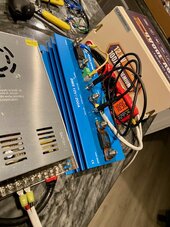atelierminceur
New Member
Yeah sadly its not that sunny since i'm often around in the alps in valley so the solar will be more for france and spain trips..Some of this comes down to how often you will be driving. My vehicle does not move as much / as far as a lot of other people.
With a smaller van like you have, there just is not all that much room on top for solar, so you will need to make up for this with a larger battery pack and finding ways to charge it more often. This will be true no matter what path you choose for refrigeration, DC or AC as that set of panels will not run it in overcast conditions.
I have only been in Geneva for a few days and it was a long time ago. Very nice place. Unfortunately I was stuck in meetings nearly the entire time so I only saw it at night, so I don't know if the elevation helps to produce clear skies and strong sunlight or not.
Geneva is flater but surely way less cute/beautiful than the other part of switzerland



